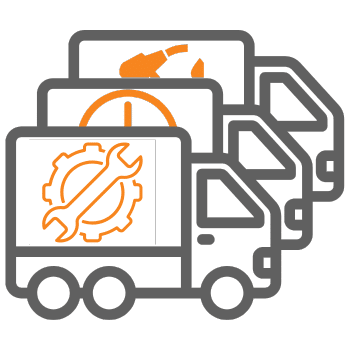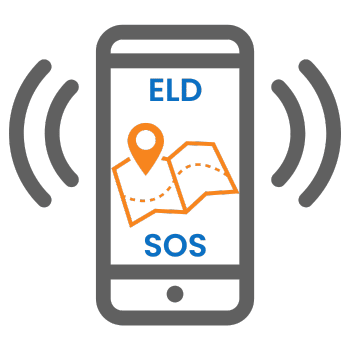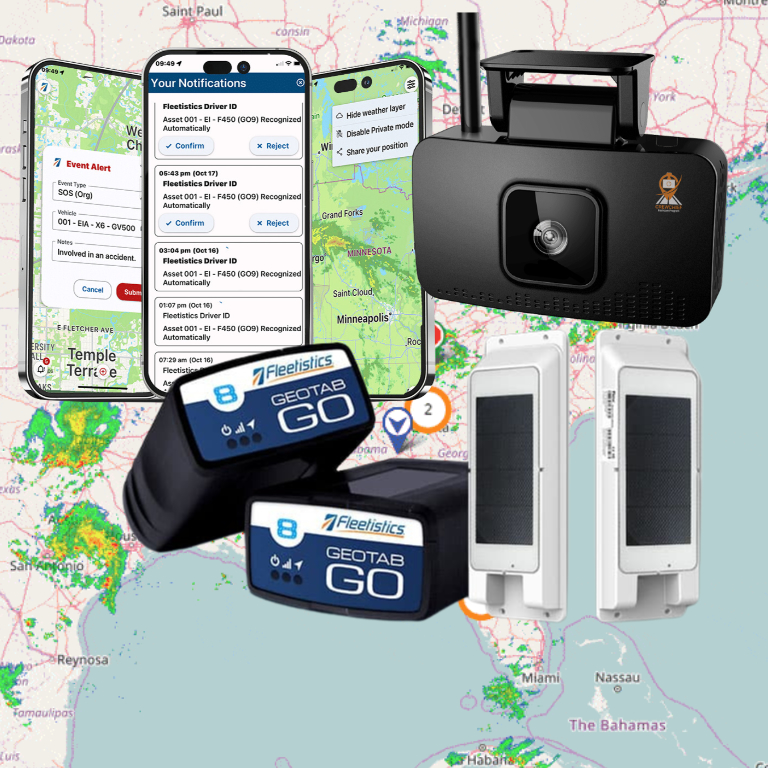Who needs a Competitive Advantage?
We can all agree, staying ahead of the curve is crucial. One way to gain a competitive advantage in many businesses is by leveraging GPS tracking data. GPS tracking and telematics technology offer a wealth of benefits based on having:
• real-time location data
• enhanced fleet visibility
• improved control over your operations
But the advantages don’t stop there. The data provided by these technologies lays a foundation to significantly improve other areas that dramatically improve your bottom line.
• Route optimization
• Time & fuel savings
• Safer driving behavior
• Reduced accident rates
• Potential insurance savings
GPS Tracking and Telematics data can also be used for preventive maintenance scheduling. This helps avoid costly breakdowns and enhances the lifespan of your fleet.
In essence, this technology can be a game-changer for your business. It can provide the competitive advantage you have been looking for. Let’s explore the many ways you can use GPS tracking data to outshine your competitors. So, let’s dive in!
The Strategic Value of GPS Tracking and Telematics Data
GPS tracking data is not just about dots on a map. When viewed through a well-organized user interface, it’s a powerful tool for strategic decision-making. One of the primary benefits of GPS tracking is improved fleet visibility. Knowing the exact location of each vehicle enables you to make informed decisions quickly. This level of control can transform the way you manage your fleet.
Telematics pairs perfectly with GPS tracking to gain deeper insight into vehicle and driver performance. Together, these technologies provide a more comprehensive view of your operations.
The insights gained from GPS tracking data can help you identify inefficiencies. This allows for targeted intervention to optimize processes. You can also use this data to enhance asset management, ensuring efficient use of resources.
Taking it a step further, analyzing the trends in your GPS data can support improved strategic planning. This includes forecasting demand, optimizing route planning, and improving customer service. Ultimately, it positions your business as a leader in your industry, increasing your competitive edge.
Embracing GPS tracking and telematics data is embracing innovation. It shows a commitment to efficiency and customer satisfaction and lays a foundation for sustained business growth.

Understanding the difference between GPS Tracking and Telematics
GPS tracking pinpoints the location of your vehicles. But when paired with telematics, its potential multiplies. Telematics systems collect various data points from your vehicles. This includes speed, fuel consumption, G-Force events, temperatures, pressures, and various engine diagnostics. Add live weather to your map and now you can really see the big picture.
Modern telematics systems are user-friendly and include intuitive dashboards that display a holistic view of the parameters being monitored. They make interpreting complex data simple and straightforward. For your business, this means actionable insights are always at your fingertips, ready to be harnessed.
The Competitive Edge in Response Time
Real-time data offers a competitive edge like no other. With real-time GPS tracking, you can respond instantly to changing conditions. This agility can help you to outshine the competition in a crowded market.
So, how does this real-time data support faster, informed decision-making? An easy example is how re-routing a vehicle to avoid traffic or dispatching the nearest driver to a client becomes effortless. This minimizes delays and enhances customer satisfaction.
Additionally, real-time insights facilitate proactive management. This can reduce unscheduled downtime and avoid unnecessary costs. By leveraging real-time data, businesses not only streamline operations but also enhance their value proposition.
Route Optimization: Saving Time and Fuel
Route optimization is a game-changer for a busy fleet. It not only saves time and helps allocate resources but can significantly cut fuel costs. GPS tracking data is a key component of applications designed to optimize routes efficiently.
A major benefit of optimized routes is reduced travel time. This leads to faster deliveries, more deliveries or service calls per day, and improved customer satisfaction. Additionally, it ensures fuel is used efficiently, keeping down operational costs.
Optimized routes also contribute to reduced vehicle wear and tear. Less mileage means less frequent maintenance, increasing your savings. Consistent route optimization can ultimately extend the lifespan of your fleet.
Key benefits of route optimization include:
- Reduced fuel consumption and emissions.
- Decreased vehicle maintenance costs.
- Improved adherence to delivery schedules.
- Enhanced customer satisfaction with timely services.
By integrating route optimization into daily operations, businesses can achieve better productivity and cost-effectiveness. This proactive approach leads to substantial improvements in overall efficiency.
The Role of Geo-fences in Fleet Management
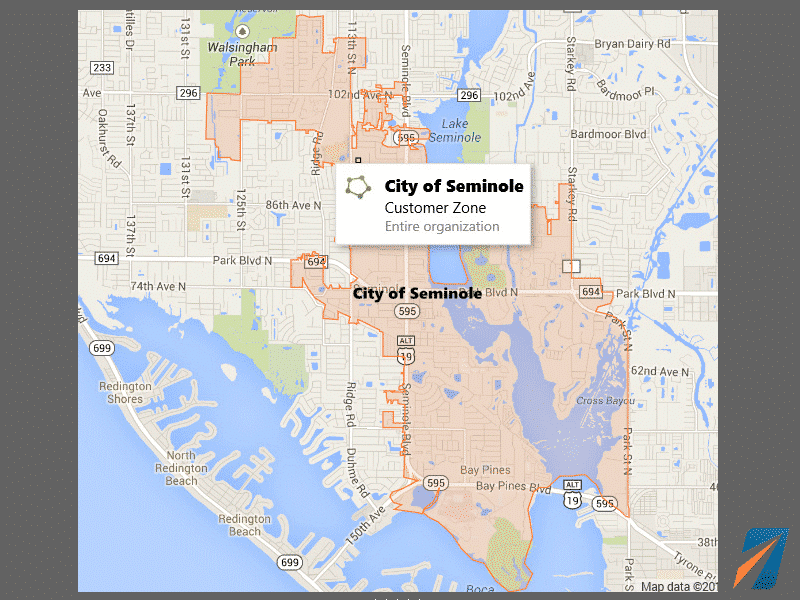
Geo-fences are virtual boundaries set around specific geographic areas. This could be your vendors, customers, employees’ homes, school zones, areas to avoid, or any other type of zone that is useful for you to identify. These digital perimeters enhance fleet management by providing location-based alerts and the ability to analyze historic activity by location.
With geo-fences, fleet managers gain more control over vehicle movements and can be alerted to entry and exit events, stops too long or too short, again, anything that would be valuable to know when it is happening instead of after a client becomes unhappy.
Geo-fences can be used to ensure vehicles adhere to predefined routes and schedules. This helps prevent unnecessary detours, resulting in adherence to your optimized routes and efficient use of resources.
Analyzing Driver Behavior for Safety and Efficiency
By analyzing driving habits, businesses can implement strategies to enhance safety and efficiency. GPS tracking data provides insights into both drivers’ patterns and performance.
Data on factors like speeding, harsh braking, and idling is invaluable. These metrics help identify areas where drivers can improve. Addressing such behaviors can lead to safer driving practices reducing the risk of collisions.
Improved driving behavior also directly impacts fuel consumption. Better driving habits lead to better fuel efficiency and lower costs. With analyzed data like driver score cards, businesses can coach drivers, creating a culture of efficiency and safety.
Ultimately, understanding driver behavior is pivotal for enhancing fleet efficiency. It empowers businesses to implement targeted training programs and incentives that foster continuous improvement and operational excellence.
Customer Service Satisfaction Soars with GPS Tracking
Ask any customer, or take some time to read some reviews, and it becomes obvious that excellent customer service sets successful businesses apart from the crowd. GPS tracking plays a pivotal role in enhancing these services. It allows businesses to provide more reliable and efficient customer interactions.
Real-time GPS data enables businesses to offer precise delivery updates. Customers appreciate transparency regarding the status of their shipments. This transparency builds trust and loyalty, crucial for long-term success. With actionable data, dispatchers can make informed decisions. This leads to faster resolutions of customer inquiries and issues.
Accurate ETAs and Improved Response Times
Accurate estimated times of arrival (ETAs) are vital for customer satisfaction. They reduce uncertainty for customers awaiting deliveries, allowing them to better plan and advise their own customers. GPS tracking enables businesses to provide accurate and reliable ETAs.
Both you and your end customer can more easily adjust to any unforeseen delays and communicate updates promptly, maintaining essential customer trust and satisfaction. For service industries, GPS tracking helps dispatchers identify the nearest available vehicle. Quick response is ensured, enhancing service speed and reliability.
Accurate ETAs and quick responses are key ingredients for maintaining competitive service levels. They boost customer retention and attract new business opportunities.
Cost Savings: From Fuel to Insurance Premiums
Reducing operational costs is always a big win. GPS tracking and telematics provides valuable solutions in this area. By providing insights into multiple aspects of fleet management, significant savings can be realized.
A key area for cost reduction is fuel consumption. Just a reduction in idle time (we call it the low hanging fruit) can represent significant savings. Add to that, more optimal route planning, minimizing unauthorized use, and the agility to make changes quickly to avoid unforeseen congestion leads to substantial fuel savings over time.
Insurance premiums are another area where savings are possible. Enhanced vehicle safety and security measures often qualify businesses for discounts. A safety program supported by GPS tracking and telematics data contributes to lower accident rates, theft prevention and timely theft recovery, contributing to reduced premiums. For the self-insured fleet this can translate to millions of dollars.
The financial benefits of GPS tracking and telematics extend far beyond fuel and insurance.
- Reduced vehicle wear and tear based on better driving habits and timely routine maintenance.
- Right Sizing your fleet based on a better understanding of the size, type and frequency of specific vehicle use.
- Better asset purchase decisions based on maintenance history and lifespan of current vehicles.
- Decreased administrative costs through automation.
These savings collectively improve a business’s bottom line. GPS tracking and telematics technology ensures that operational efficiency translates directly to cost reductions.
Maintenance Scheduling and Asset Management
Effective maintenance scheduling is critical for fleet longevity. GPS tracking and telematics systems provide data to implement predictive maintenance strategies. Regular, timely maintenance helps avoid costly breakdowns.
With telematics, businesses track vehicle usage accurately. This data guides maintenance schedules based on real-time conditions, not arbitrary intervals. Vehicles stay in top condition, reducing repair costs over time.
Asset management can also extend beyond vehicles to other equipment. GPS tracking identifies utilization trends, preventing overuse and potential damage. Managed effectively, assets perform better and last longer, enhancing return on investment.
Theft Prevention and Recovery with GPS Data
Theft poses another significant threat to fleet security. GPS tracking technology is an effective deterrent. Vehicles equipped with GPS can be monitored continuously, and alerts can be generated if they operate outside of business hours, reducing risks.
In the event of a theft, GPS data becomes invaluable. The real-time location tracking facilitates quick recovery of stolen assets. This can minimize the potential downtime and financial loss associated with theft.
Overall, GPS technology provides peace of mind for business owners. It not only protects assets but also ensures a swift response if incidents occur, maintaining business continuity.
Data-Driven Fleet Management and Business Growth
Data is a powerful tool in today’s business world. GPS tracking and telematics provides a wealth of information that can transform the way you manage your fleet. By analyzing this data, businesses can identify inefficiencies and improve processes.
This real-time data allows for agile decision-making. Managers can respond quickly to situations, optimizing operations on the go. An effective response leads to improved customer satisfaction and service delivery.
GPS data reveals trends that can shape long-term strategies. Businesses gain insight into fleet performance, driver behavior, and maintenance needs. This information is invaluable for strategic planning and operational enhancements.
Investing in GPS technology fosters sustainable growth. As businesses grow, the integration of advanced data analytics supports expansion. GPS tracking not only ensures efficient fleet management but also empowers informed business decisions for future growth.
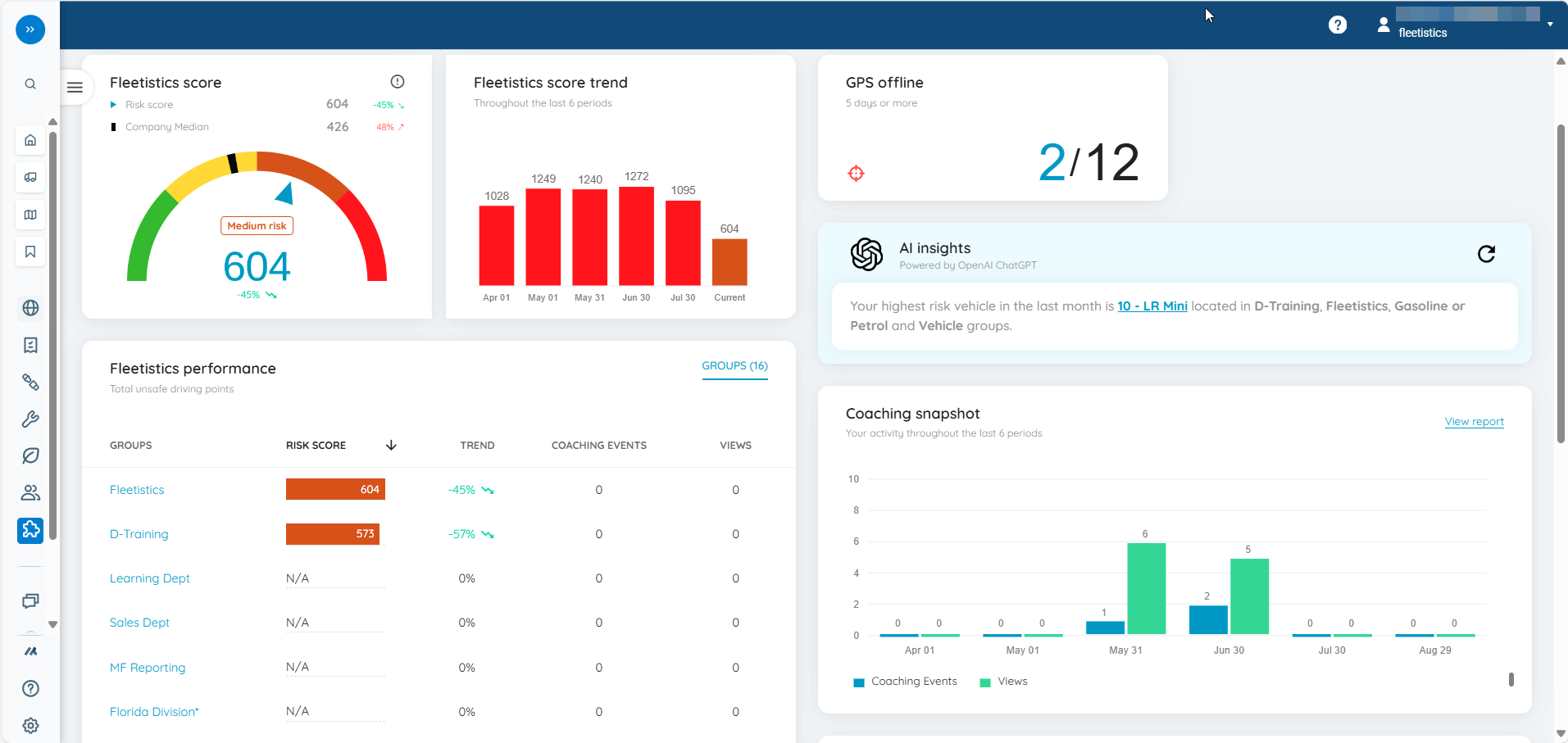
Overcoming Challenges and Maximizing ROI
Implementing GPS tracking comes with some challenges. Addressing these promptly ensures smooth operations. Overcoming obstacles leads to substantial ROI.
Data complexity can be daunting. However, proper training simplifies data analysis. Equip your team with skills to interpret and leverage GPS data effectively.
Another challenge is system integration. GPS tracking should align with existing operations. Work with vendors to customize solutions that fit your business needs.
Initial investment might seem high, yet cost savings from optimized routes, reduced fuel use, and maintenance will quickly offset that cost. Dedicating a system administrator or analyst to get the most ROI out of your system can pay off in spades! Saving just $2500 annually per vehicle in a fleet of 50 vehicles creates $125,000 in savings. The more you use the data, the higher your savings are, so it is easily enough to support the staff to fully leverage the investment in technology.
Focus on long-term gains and efficiency improvements that GPS tracking delivers.
Addressing Data Security and Privacy Concerns
Data security is vital in the age of information. Protecting GPS data should be a priority for businesses. Robust security measures safeguard both business and customer information. Many businesses find it profitable to outsource IT and security to stay focused on their core operations.
Partner with a reputable GPS provider who prioritizes security. Choose systems with advanced encryption and security protocols. This prevents unauthorized access and data breaches.
Maintaining privacy is equally important. Clearly communicate data usage policies to employees and clients. Transparency builds trust and ensures compliance with privacy regulations.
Calculating the ROI of GPS Tracking Investments
Investments require justification. Calculate potential ROI to understand the value of GPS technology. This involves analyzing cost savings and efficiency improvements. The ROI calculator found at this link allows you to enter the variables that apply to your business and see the potential results you can achieve.
Start by identifying direct savings, such as reduced fuel consumption and maintenance costs. These easily quantifiable metrics highlight the tangible benefits. Then consider the indirect benefits like improved customer satisfaction and safety. Though harder to measure, these greatly affect business growth and reputation.
A structured solution evaluation in a portion of your fleet will demonstrate and verify the value. Implement the system, collect your baseline data, implement change, and measure the difference.
Ultimately, comprehensive ROI analysis will support the investment decision. It confirms that GPS tracking not only enhances operations but also yields significant financial returns in the test group that can be projected to set goals for the entire fleet when deployed.
Conclusion: Staying Ahead with GPS Tracking and Telematics Data
Harnessing GPS tracking data equips businesses with a clear competitive edge. It drives improved efficiency, cost reduction, and superior customer service. By integrating telematics into fleet operations, businesses not only boost their current performance but also lay a strong foundation for future growth.
Adopting this technology isn’t just about keeping pace with industry standards; it’s about setting new ones. As you enhance operations and decision-making with real-time data, you ensure your business remains agile and adaptable. Embrace GPS tracking to transform challenges into opportunities, staying a step ahead in an increasingly competitive market.

